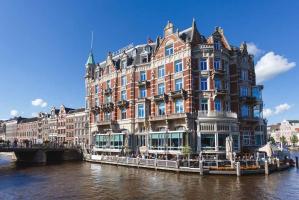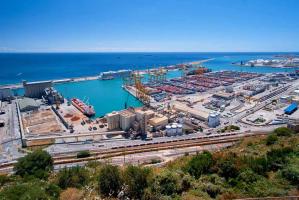Amsterdam bans creation of new hotels
Another piece in the overall strategy to reduce tourist flows to the city
 TheMayor.EU logo
TheMayor.EU logo It’s not meant to rival UNESCO but rather to focus on sites and traditions that symbolize the ancient roots of European values
Last week, seven sites and cultural traditions received the European Heritage Label boosting the total list to 67 such objects. Yet not many Europeans seem to be aware of this distinction, even though it has been in existence for a decade now.
When most people think of cultural heritage preservation they think of UNESCO, which boasts a large and growing base of tangible and intangible monuments across the world attesting to the genius of humankind throughout the centuries.
The European Heritage Label hasn’t reached that kind of prominence due to its more limited geographical scope. Plus, its stated aim is slightly different. The European Commission’s initiative seeks to discover and preserve sites and traditions that grant the concept of European values (such as liberty, tolerance, integration) a certain commonality and historicity.
Crafting a coherent (pan)-European identity has been one of the biggest challenges for the political and economic project that is the European Union. This is where the EU officials have decided to also look back into the past not only as periods of conflict and division but also as times of commonality that have crafted a subtle yet perceptible sense of what it means to be European.
The European Heritage Label combines both tangible and intangible monuments.
For example, among the objects awarded the label this year, we can see a hidden church in Amsterdam called Our Lord in the Attic. The clandestine temple served the small Catholic community of the city and while the authorities knew about its operation, they turned a blind eye as long as it wasn’t too visible. Kind of makes you think about the contemporary tolerance of Dutch authorities to soft drug consumption.
The only intangible monument listed this year was the Finnish epic Kalevala, which is a collection of oral mythological poetry that has served to inspire Finnish nationalism and works of art, literature, film and music. It’s known to have been one of the influences on JRR Tolkien’s The Lord of the Rings fantasy epic.

Legislators and magnates have to await a preliminary ruling from the European Court of Justice

The building will then serve as the site for a new museum dedicated to Finnish-Russian relations

Another piece in the overall strategy to reduce tourist flows to the city

It will serve as a virtual companion to the municipal network of libraries in the country

In addition, the federal government has launched the National Week of Action against Bicycle Theft to raise awareness of the issue and the new solution

The facility will replace the need to have water supplied by tankers from Valencia

The city thinks that it’s time to update pet-related street cleanliness rules for the 21st century

Experimenting with public transport provision in Germany is clearly in a state of creative fervour

Legislators and magnates have to await a preliminary ruling from the European Court of Justice

The benefit will last until the Dutch parliament adopts the transgender law

Experimenting with public transport provision in Germany is clearly in a state of creative fervour

It also set the standards for a better European parking card for people with disabilities

Urban dwellers across the EU are having a say in making their surroundings friendlier to people and the environment.

Forests in the EU can help green the European construction industry and bolster a continent-wide push for architectural improvements.

Apply by 10 November and do your part for the transformation of European public spaces

Catch up with some recommendations for the 2024 European Capital of Culture programme from the mayor of Tartu

An interview with the ICLEI regional director for Europe аfter the close of COP28

An interview with a member of the No Hate Speech Network team














